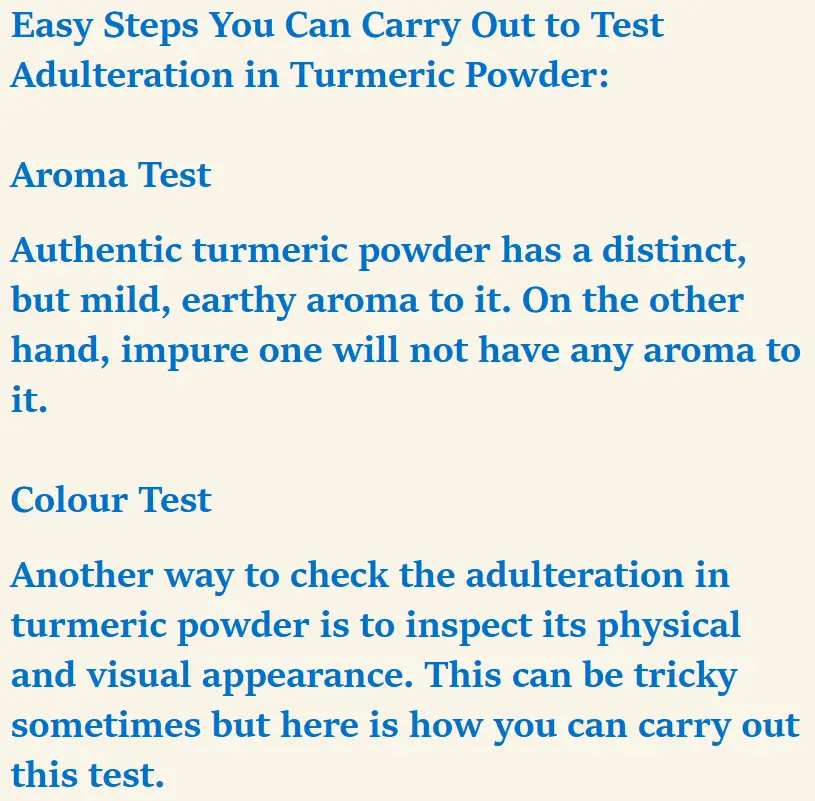In a relentless critique that extends beyond Indian politics, democracy, cricket, clothing, and medicine, The Economist has turned its attention to lambast Indian turmeric. The magazine’s recent article, published on November 2nd, contends that turmeric is posing a health risk. The Economist has gone so far as to tweet the same article with varied captions at least two dozen times. This scrutiny of turmeric has reverberated within Indian media, with outlets such as Hindustan Times and The Times of India picking up and republishing the story.
I will share headlines shared by The Economist on X.
Today, on 18th November, The Economist wrote, “Turmeric is killing people. Its skin-staining yellowness can be deceptive and deadly. One country has an enlightened way of dealing with it.”
On 3rd November, The Economist wrote, “Turmeric is killing people. Developing countries—especially India—should learn from Bangladesh’s open, pragmatic attempts to prevent this from happening.”
On 4th November, The Economist wrote, “How to stop turmeric from killing people.”
On 3rd November, The Economist with a different headline wrote, “Turmeric has long been prized in Ayurvedic medicine for its anti-inflammatory properties. But for the millions of South Asians who habitually consume it, its skin-staining yellowness can be deceptive and deadly.”
On 5th November, The Economist wrote, “The rhizomes from which turmeric is extracted are routinely dusted with lead chromate, a neurotoxin. This causes heart and brain diseases.
Bangladesh’s response to the problem, if properly understood, could work in many countries.”
On 5th November, The Economist wrote on X , “Turmeric sold in much of South Asia is routinely adulterated with lead chromate in order to brighten its golden hue.
In Bangladesh, a campaign to reduce this practice has been hugely successful. Can other countries follow suit?”
Additionally, in tandem with The Economist, prominent Indian mainstream media outlets such as Hindustan Times and The Times of India have featured a parallel narrative. The Times of India, inspired by The Economist’s article, conducted foundational research aligned with the themes presented in the original piece. Meanwhile, Hindustan Times opted for a more direct approach, publishing an article that essentially replicated The Economist’s content, albeit with its own headline.
The Times of India published, “Trendy To Toxic: Is Turmeric Losing Its Golden Hue?”

Hindustan Times published the headline, “How to stop turmeric from killing people.”

The revelation of stories questioning the safety of turmeric may indeed startle many Indians, given that turmeric is not merely a spice but holds deep cultural significance as an auspicious element. Its utilization spans across various aspects, from weddings to numerous health benefits. However, when a narrative emerges suggesting that turmeric has the potential to be lethal, it inevitably prompts a raised eyebrow of curiosity. Within the confines of this article, we shall unravel the veracity behind this disseminated narrative.
Fact Check
Our fact-checking process commences with an examination of The Economist’s published story. The article states, “To heighten their color, the rhizomes from which the spice is extracted are routinely dusted with lead chromate, a neurotoxin.”
Furthermore, it delves into the issue of turmeric adulteration with lead chromate, highlighting Bangladesh’s efforts, under Sheikh Hasina’s leadership, in vehemently combating this problem. The article contrasts this with an apparent lack of awareness and action in India, a nation grappling with widespread lead poisoning. It suggests that India could draw lessons from Bangladesh on effectively addressing such poisoning concerns.
However, it is crucial to clarify at this juncture that the substance of The Economist’s article significantly diverges from its headline. While the content primarily emphasizes the health ramifications of adulterated turmeric, the headline implies a broader and potentially misleading assertion that pure turmeric itself is perilous to consume.
After conceding in the second paragraph that lead chromate, a neurotoxin used in turmeric adulteration, is responsible for lead poisoning, the article presents speculative data suggesting that lead poisoning has purportedly diminished South Asian productivity by an equivalent of 9% of GDP. Subsequently, the narrative shifts to commend Bangladesh, India’s neighbor, for its purportedly effective policies involving the assistance of foreign experts and NGOs, insinuating a taunt towards India’s perceived inefficacy in curbing lead poisoning.
Government’s proactive approach to tackling adultered turmeric menace
Let’s delve into the proactive measures taken by the Indian government in combating adulteration, specifically in the context of turmeric and spices.
According to a report by Indian Express dated May 13, 2023, a team from the state Food and Drug Control Administration conducted a rigorous seizure operation, confiscating a total of 3,057.4 kg of adulterated chili, turmeric, and coriander powder valued at Rs 3.98 lakh. The team also uncovered green and yellow pigments during the raid at a firm located in the Kadodara area of Surat district.

Similarly, as reported by Odisha TV on August 22, 2023, the Cuttack Municipal Corporation executed a raid at Malgodown, seizing over five quintals of adulterated spices. The confiscated spices included turmeric powder, red chilli powder, and cumin powder.

In November 2020, The New Indian Express reported that joint raids by police and food safety officials from Cuttack Municipal Corporation (CMC) led to the dismantling of six adulteration units. Substantial quantities of adulterated chilli powder, turmeric, coriander, and cumin powder were seized during these operations.

In January 2022, Pragativadi disclosed that the Commissionerate Police uncovered an illicit factory involved in the production of adulterated chilli and turmeric powder. The unit, lacking any trade or food safety license, was found to be manufacturing these products by blending chemicals and other harmful substances.
Additionally, in February 2022, Odisha TV reported a significant crackdown on a duplicate spice processing unit in Cuttack. The police raid resulted in the confiscation of substandard raw materials, counterfeit labels from renowned spice brands, and processing machinery.
News Live Odisha, in January 2021, highlighted the Berhampur police’s intensified efforts against adulterated food manufacturing units. The report detailed a raid on an adulterated spice and chilli manufacturing factory in Badabazaar Pandav Nagar, leading to the seizure of substantial amounts of adulterated spices and raw material processing machines.
These instances, spotlighting six notable police raids, have captured nationwide attention, underscoring the gravity of the issue. Importantly, they serve as illustrative examples, showcasing the country’s acknowledgment of the problem of adulterated turmeric and the determined efforts being made to address it on a daily basis.
In December 2020, The Economic Times reported that the Food Safety and Standards Authority of India (FSSAI) exhibited a proactive stance in combatting turmeric adulteration. FSSAI urged state food commissioners to conduct a robust enforcement drive to curb adulteration in spices. In a letter addressed to the Commissioners of Food Safety across all States and Union Territories, FSSAI expressed concern over media reports highlighting the sale of adulterated spices in the domestic market. Moreover, several articles from responsible media organizations provide guidance on distinguishing between pure and adulterated turmeric.



Conclusion:
Undeniably, the potential dangers of adulterated turmeric or any food item on the human immune system cannot be dismissed. However, singling out turmeric as a poison without explicitly stating in the headline that it is adulteration, not pure turmeric, that poses a threat raises questions about bias against Indian civilization and its ancient Ayurvedic practices. Turmeric adulteration is no different from the widespread adulteration practices in Western cuisines, such as coffee, olive oil, or honey.
Furthermore, upon scrutinizing the last paragraph of The Economist article (below image), it becomes evident that the English publication expresses ire towards the Narendra Modi government’s ban on NGOs. The article conveniently sidesteps the significant efforts of government agencies in cracking down on food adulteration practices, instead attempting to emphasize the perceived necessity of NGOs.

In summary, The Economist’s singular article, accompanied by numerous captions and headlines, seemingly attempts to undermine the positive attributes of turmeric by misleading the public, conflating adulterated turmeric with its pure form. Moreover, the article appears to have a secondary agenda of promoting the benefits of NGOs, particularly foreign ones, by highlighting their role in assisting Bangladesh in combating spice adulteration. The Economist strategically and insidiously targeted turmeric, well aware of its deep-rooted cultural significance in ancient Indian beliefs, while downplaying the commonality of adulteration in other spices. In essence, The Economist’s approach appears to be hitting two birds with one stone — disparaging the auspicious turmeric and peddling narratives favorable to foreign NGOs.
| Claim | Turmeric is not safe for consumption, it’s lethal to the human body |
| Claimed by | The Economist |
| Fact Check | Misleading |








